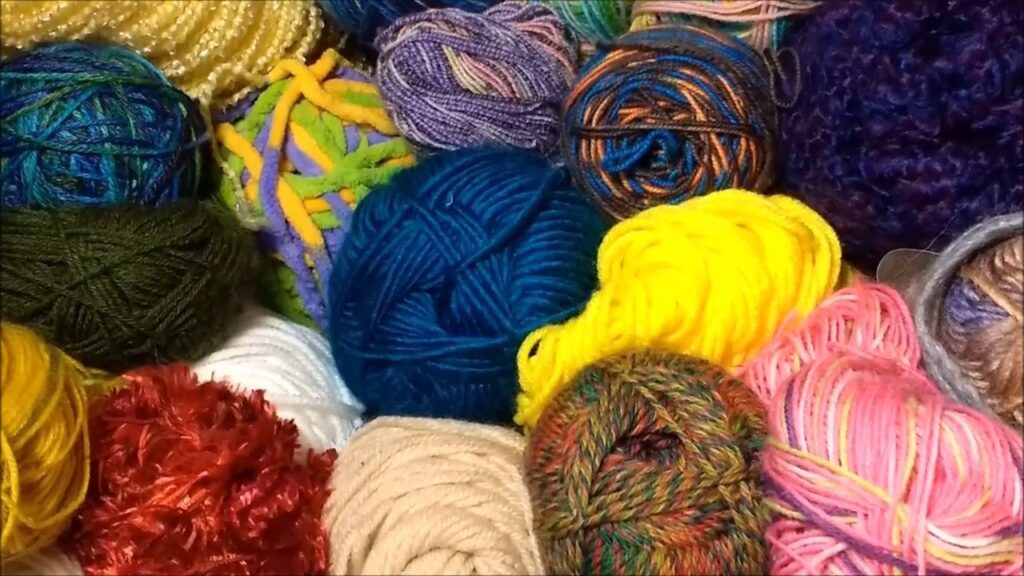Sheep Wool, Mohair, Cashmere, Angora, Alpaca, Camel, and Llama
Most natural yarn comes from animal fiber, particularly sheep wool, mohair, cashmere, angora, and alpaca. Understanding yarn fiber helps when choosing yarn for a project.
Natural yarn can come from animal fiber or plant fiber, but historically most yarn has been made from animal fiber. Different animals produce different kinds of hair which in turn makes different kinds of yarn, so it’s important to understand the characteristics of the animal fiber before choosing that yarn for a project. And fibers from one type of animal are often spun together with fiber from another animal, usually sheep, to make the yarn more durable and affordable.
Evaluating Animal Fiber
There are four factors to consider when evaluating an animal fiber:
- Scales—on the surface of the fiber, scales affect softness and luster
- Fineness—the fiber diameter (the thinner the hair, the softer the yarn)
- Staple length—how long the hair is (shorter fibers are softer, but longer fibers are more durable in yarn)
- Crimp—the structure of the hair (straighter hair spins into a yarn with more bounce and warmth, but curlier hair spins denser and stronger)
Sheep Wool
Sheep wool is by far the most popular type of yarn fiber. There are so many different types of wool because fiber varies from breed to breed, for example, Merino and Shetland, and even from sheep to sheep. Wool is highly resilient and elastic (it can be stretched and will recover its shape) and can absorb up to 30% of its weight in water and still feel dry and warm. The scales on some sheep wool can make the yarn scratchy.
Angora Goats and Cashmere Goats
Angora goats produce mohair. Mohair absorbs moisture, is warmer and stronger than sheep wool, and its large, flat scales give it a lustrous appearance and help it absorb and reflect dye beautifully. This fiber is usually spun with a binder thread, looped back on itself, and brushed to create a fuzzy yarn with a slight halo. Cashmere goats produce a soft, warm, downy undercoat that makes for very expensive yarn because the goats produce so little of it.
Angora Rabbits
Angora rabbits produce angora yarn. This soft, lightweight fiber is eight times warmer than wool and can hold twice as much moisture. These rabbits have few sweat glands, producing a clean hair that can be spun straight off the rabbit’s back. Their short hairs tend to produce a fuzzy yarn with little elasticity.
Camelids—Alpaca, Camel, Llama
Alpaca are now the most popular of the camelid animals for producing yarn. There are two types of alpaca: suri, which produce long, silky hair (“silky suri”); and huacaya, which produce a denser, crimpier hair (“wooly huacaya”). Alpaca fibers are soft, have the same fineness as cashmere, are longer than wool, absorb moisture like wool, and have a hollow core that traps air and makes them very warm. The fibers are strong so they make durable garments, but make for a dense fabric that is not very elastic. They have fewer scales than wool so the fibers have a lustrous appearance and take dye well, but they also come in over twenty natural colors from white to brown to black.
Bactrian camels produce a soft and warm down coat that can be spun into a lightweight yarn with little elasticity. Llama produces a soft undercoat that behaves like alpaca hair.
Other Popular Fiber-Producing Animals
Qiviut fiber comes from the downy undercoat of the musk ox, and is eight times warmer than wool, very soft and fine, and has little elasticity. The yak produces short, crimpy fibers. Opossum yarn is becoming popular in some countries, and some spinners even like to use dog or cat hair. Remember that any animal can produce hair for spinning yarn.
A General Guide for Choosing Yarn Fiber
A good guide for selecting a yarn fiber is to think about the conditions that animals lived in—yarn made from that animal will generally behave in the same way hair needed for that animal.
Source:
Parkes, Clara. The Knitter’s Book of Yarn: The Ultimate Guide to Choosing, Using, and Enjoying Yarn. New York: Potter Craft, 2007.

